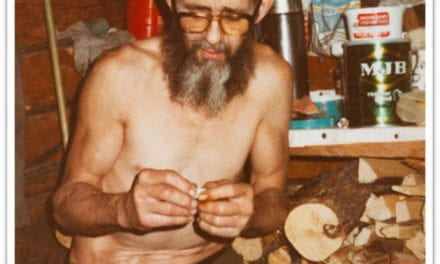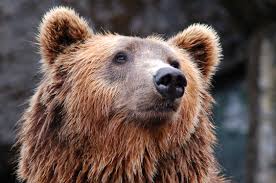FEATURE … http://www.google.ca/url?sa=t&rct=j&q=&esrc=s&source=web&cd=1&ved=0CB0QFjAA&url=http%3A%2F%2Fcpaws-southernalberta.org%2Fupload%2FWinter_2014_2015_Green_Notes_Newsletter.pdf&ei=PMreVLb-N4yqgwTe0YOwAQ&usg=AFQjCNFIDSZg9WAEEOARAw31jzspH6YodQ
By Max Winkler
Being a park warden is not a job but a way of life, my chief warden once told me. My family and I were blessed to live that life from 1959 until I retired from the service in 1987.
From the beginning, I loved the work. All of the western national parks were then divided into warden districts, with a warden for each. For my first four years, I was stationed in remote backcountry districts.
Our son, Terry, was just 11 weeks old when my wife, Julie, and I took turns carrying him as we rode our horses the 47 kilometres to the headquarters cabin of the Brazeau district. Not only did he survive that trip, but years later he went on to join the Warden’s Service.
Mountains were in my bones. As a youth in Bavaria, Germany, I biked, skied and climbed at home as well as in Austria and Italy. I came to southern Ontario in 1953 as a 22-year-old, but I missed the mountains of my youth.
A year later, I moved to Edmonton and whenever possible spent time in Banff, Jasper and Elk Island. I met several park wardens and learned what their work entailed and what national parks stood for.
Within five years, I had gained Canadian citizenship, and could apply to be a park warden in Jasper. It was the beginning
of a 28-year career in which I and my family were privileged to live in incredibly beautiful surroundings.
There is a marked contrast in the life and living conditions of wardens in my time and in generations that followed. Today, there are no districts and technology is advanced. But not during my day. Of the 14 districts that existed in Jasper until the mid-1970s, five were accessible only by trails using horses in summer, or by using snowshoes or skis in winter.
A winter supply of food had to be packed in by the horses in the fall. My work involved trail patrols covering the district, cabin and phone line maintenance, game count, checking for possible poachers and forest fires.
We lived in a log cabin year-round with the exception of 15 days’ annual leave or for taking training courses. We were on call 24 hours a day. The warden was allowed to have one day in town each month when he turned in a monthly report and picked up supplies and groceries. Getting to town in winter could sometimes mean four or five days of snowshoeing. Holidays could only be taken in the off-season of November until April.
It is amazing that in the late 1880s some people in North America had the foresight and determination to establish the world’s first national parks, like Yellowstone with its geysers and Banff with its hot springs.
National park status was a revolutionary idea at a time when much of this continent’s west was still wilderness. Guidelines, blueprints, policy and regulations had to be developed.
In hindsight, we can see that some unwise decisions were made, such as predator control (killing wolves, coyotes and cougars), and the moving of diseased Plains Bison from Buffalo National Park (Wainwright) to Wood Buffalo National Park and interbreeding them with Wood Bison. Another example is the bringing of several hundred elk from Yellowstone and 20 years later having to slaughter many to
control the population. Today, we can only hope that future decisions are not more detrimental to our national parks than the moving of Plains Bison to Wood Buffalo National Park.
Most of the millions of visitors who come to our parks each year are seeking a relatively undisturbed area where wildlife, plants, forests, rivers and lakes survive as they have for countless centuries. Parks Canada is to be commended for establishing many new parks throughout Canada, but on a map they still appear as little islands surrounded by roads, town sites, oil and gas exploration, logging and strip mining. These are living, invaluable museums, preserving a relatively pristine environment.
Ottawa wants our parks to pay for themselves. To save money, park maintenance and staff numbers have been cut. To me, it is a disservice to have our parks operated as a business, making them less accessible to low income families. They belong to all of us, rich and poor.
To raise revenue, we are being offered Disneyland-type entertainment from commercial operators like Brewster and Maligne Tours. We now have the Glacier Walk near the Columbia Icefields and the via ferrata on Mt. Norquay. And we are fighting to prevent developers from erecting overnight accommodation at Maligne Lake in contravention with longstanding park policy.
I think back to the vision of the National Parks Act of 1930. Although the act has been amended a number of times, the dedication clause has remained consistent. It states:
“The National Parks of Canada are hereby dedicated to the people of Canada for their benefit, education and enjoyment… and National Parks shall be maintained and made use of so as to leave them unimpaired for future generations.” Henry D. Thoreau wrote, “In Wilderness is the preservation of the world.” That was almost 200 years ago and these words are even more meaningful today.



Recent Comments